Bikepacking bags are one of those innovations, like 1x drivetrains and dropper posts, that seem really widespread in the bubble which I inhabit, but which have yet to cross over to the wider world of cycling. My Instagram feed is full of fancy frame bags and handlebar harnesses, but racks, panniers and rucksacks still reign supreme in real life. With massive manufacturers like Ortlieb and Specialized bringing out their own lines of soft luggage in the past year, that might be about to change…
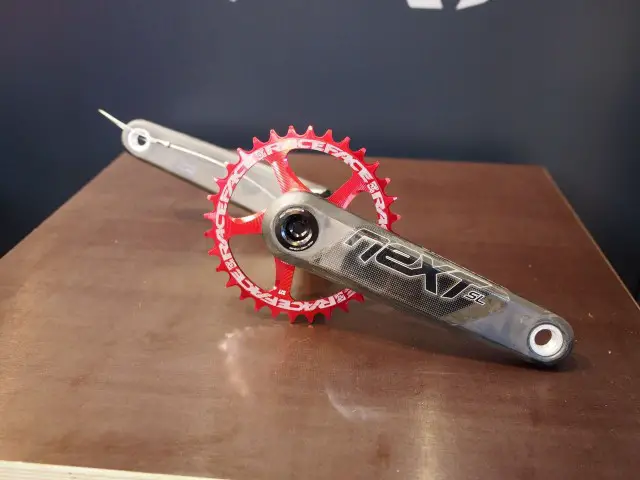
For riding off road, soft bags have an edge over a traditional rack and pannier setup. Obviously, you don’t need to track down a frame with rack mounts. But that’s not the only plus point. Rather than having the weight concentrated over the rear axle, for example, you can use canny packing to end up with a bike that rides like a slightly heavier version of itself, instead of a solid pewter donkey. Soft bags admittedly have certain disadvantages, such as fiddly setup, added expense, and a tendency to buff frame paint to a scratchy matte. Their ability to carry less stuff than a traditional touring setup means difficult decisions and nerdy packing lists – what do you leave out when leaving civilisation? But it’s also a blessing, simply because the more carrying capacity you have, the more you tend to weigh yourself down. For riders who want to carry enough to sleep and eat by the trail side, yet still have a bike that handles OK off road, soft luggage makes bags of sense. (Ed: golf claps Antony, golf claps).
Bikepacking bags coalesced into their current, recognisable form around a decade ago, and now there are lots of manufacturers offering very cosmetically similar setups. But none of them are identical, and often it’s the niggling details that set them apart. So apologies in advance if this review seems overly picky, but it comes with the territory.
Before we get on to specifics, some general impressions. The range is mostly made from a sturdy rubberised fabric in a dirt-disdaining dark grey. While it might look a bit “bring out the gimp”, it wipes clean better than anything made from uncoated material. Fixings and fittings are on the tough, chunky side, and selected straps are rubberised too, for extra non-slip potential.
I tested the Burra Burra Framepack, Top Tube Bag, Seat Pack, and the Handlebar Stabilizer Harness, together with its matching drybag. The range also includes some bottle cage kit bags (a la Salsa’s Anything Cages), a full frame bag, and the “Pizza Bag”; a square affair designed to work with a front porteur rack.
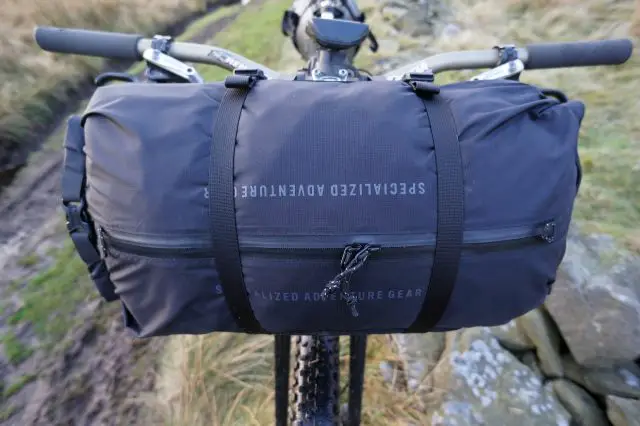
Handlebar Stabilizer Harness: £85
Starting at the front of the bike, we have the Handlebar Stabilizer Harness. Unlike other designs, which tend to be entirely strappy, the Specialized harness uses a pair of aluminium brackets connected to a U-shaped aluminium prong. This supports the harness and then the whole shebang clamps to the handlebars. The aim of this arrangement is to get your payload away from your bars, where it can’t cause disasters with kinked gear cables or burst brake hoses. It also allows riding on the tops if you have a drop bar bike. It won’t work with all road shifters though, and it definitely won’t work with the older type where the cables run externally out from the shifter body.
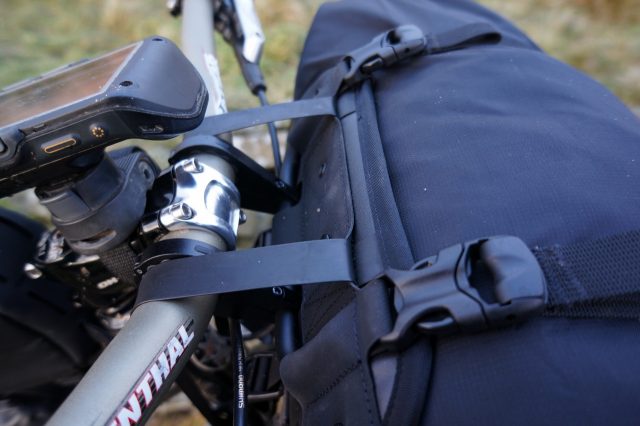
The aluminium clamps aren’t compatible with carbon bars, but they do come with a set of inserts for the (current) two main handlebar diameters. They secure with tiddly 3mm hex bolts which, being slightly ham of fist, I was constantly in fear of stripping or losing. I couldn’t get them tight enough to stop the support bracket rotating, meaning that within 5 minutes of hitting proper off-road, the handlebar roll would be buzzing the front wheel. And thus began a saga of faff.
For further security, the harness comes with an extra set of straps, made from rubbery black webbing. Someone has thoughtfully added a set of thumb loops to these straps so you can cinch them up really tight, but the loops are a real pain to get through the buckles, and after spending 10 minutes cursing and weeping by the trailside while my fingers froze, I ended up just snipping them off. The harness comes with setup instructions from the Ikea school of minimalism, which suggest putting the straps under your fork legs. If you do this and tighten them up, not only does it not stop the bag drooping, it also pulls it down towards the wheel. So I ended up looping them round the bars instead, but this still didn’t help the slippage situation much. After a couple of frustrating rides, I found that the slipping could be almost completely stopped running the clamps as close to the centre of the bar as I could, and padding out the bars slightly with a couple of strips of duct tape. In fairness, this was with a hefty load of around 2kg on the bars, on a bike with rigid forks. So it may not be an issue for everyone, but it was for me.
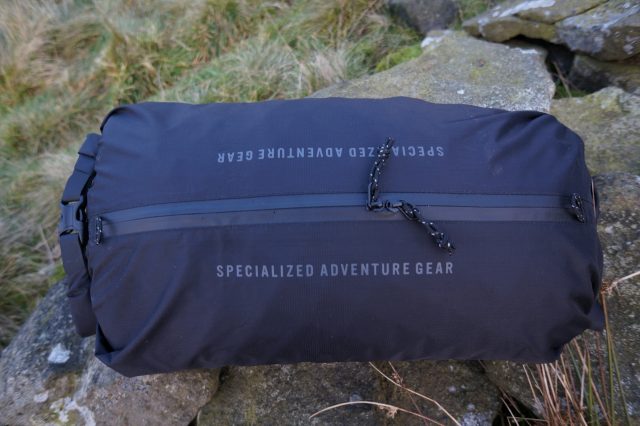
Drypack 23: £20
The harness itself has some extra features such as daisy chain loops (with cool stealth reflective detailing), but its main job is just to clamp a dry bag tenaciously. Specialized’s compatible Drypack is a solid, double-ended affair, made with Cordura for extra toughness and available in two sizes. I tested the Drypack 23, which happily swallowed my bulky winter sleeping bag and Thermarest. The buckles are good quality, and packing is made slightly easier by a press-stud closure at each end, which you can close before rolling the ends. The separate front pocket is a nice touch, and being watertight it’ll keep your map dry, or stop your wet socks from seeping foulness over whatever’s in the main compartment. Some manufacturers’ luggage systems let you clip an extra bag on the front of your handlebar roll, but this is absent here. You might be able to get a different one to fit though.The extra stowage from the front pocket doesn’t add up much – you couldn’t fit a decent size camera in it, for example – but it was still surprisingly useful for long, thin items like my Mountain Morph pump, and a double-ended zip makes it just about possible to access on the go, even with the harness buckles connected.
The bag did start to work its way out of the harness on very rough trails. I know from experience that this can be related to sub-optimal packing rather than problems with the bar harness itself, but it’d be nice to see some extra loops on the bag to prevent this. Or maybe future versions could use those fancy urethane-coated straps on the front of the roll, as well as the back.
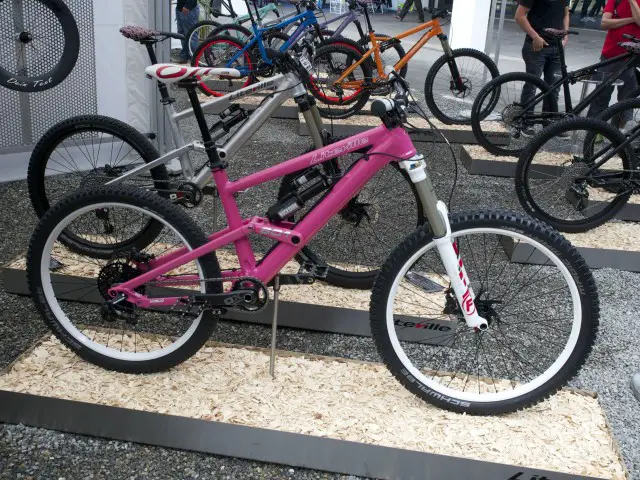
Top Tube Pack: £35
The top tube bag might look like something the host wears at a swinger’s party, but it was excellent in use, with just the right combination of attachment options and internal reinforcement to minimise the dreaded side-flop. The zip is extremely waterproof and there are useful internal pockets, including a key loop.
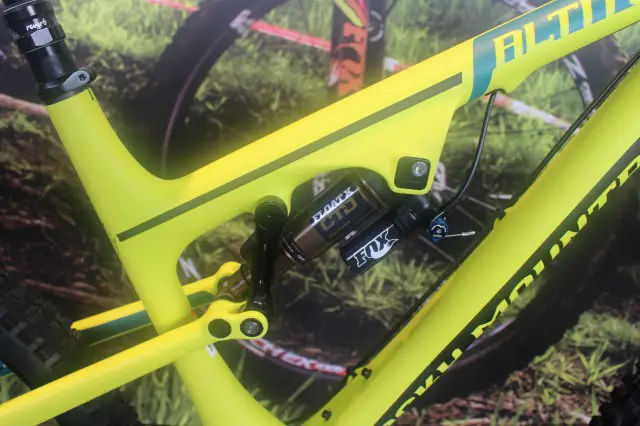
Frame Pack 5: £20
The frame pack is available in three different sizes, and is slightly deeper than similar ones I’ve used. On my 18” mountain bike frame, the Frame Pack 5 took up so much of the front triangle that I couldn’t squeeze a water bottle underneath, even as an emergency backup. On the other hand, if you have a larger frame, or a medium one with a horizontal top tube, the extra capacity will be a boon. The pack has two slim external pockets, and a long main zip covered by a flap. The flap is there because the zip isn’t waterproof, and I did find the bag took on a bit of water after jetting it clean with a hose, but this shouldn’t be an issue in use, unless you’re doing properly bonkers river crossings. It has a tonne of attachment points, plus extra daisy chain loops on the bottom.
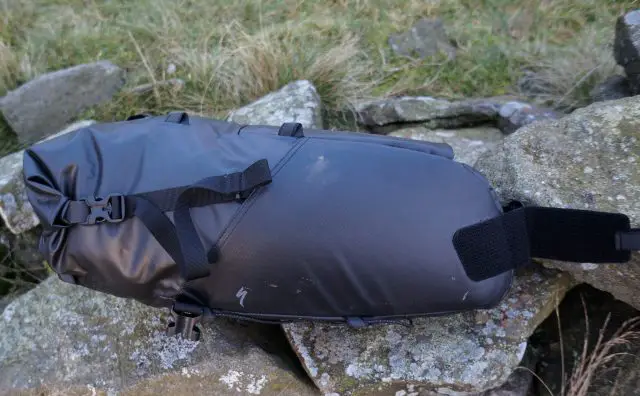
Stabilizer Seatpack 20: £120
The seatpack comes in two sizes, the Burra Burra 10 and the Burra Burra 20. These numbers bear no correlation to the bags’ actual sizes, which are 8.5l and 10l respectively. The 10l seatpack is still humungous by the standards of most bikepacking kit, and I’d go for the smaller size if I was planning to use the seatpack off road.
The seatpack has a couple of features that set it apart from most of the other stuff out there. It mounts with a combination of straps but it has a bit of extra backbone, in the form of an aluminium bracket that clamps around your seatpost. The pack is supplied with two different diameters of clamp. The clamp is all metal, so it isn’t carbon compatible, and definitely isn’t dropper compatible. The lack of a hinge also means you have to remove your seat post to fit it, and made it a faff to install on a kinked Thomson layback post (First World problem ahoy). Once installed, the loop-shaped bracket slides into a long narrow pocket on top of the bag. There’s an extra set of straps that go round the saddle rails but most of the work is done by the bracket.
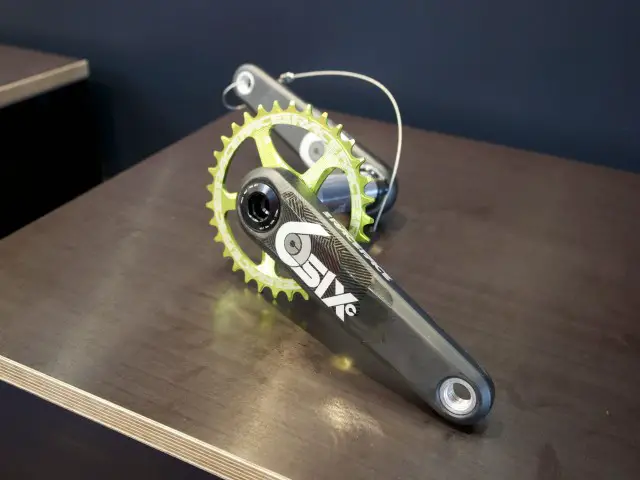
Once you’ve attached the pack, and wedged your stuff inside, it closes with the same press stud and roll combo as the front drybag. The end flap of the bag is secured with a couple of side straps. The length of these is on the generous side, which is great if you’re cramming the kitchen sink in, but also gives your bag some undergrowth-catching ears if you’re packing a lighter load. It all feels very solidly made, although the bracket can still pivot up and down, even with the bolt gorilla’ed up. You can use the bag on its own, but it waggles hugely thanks to the relaxed fit of the saddle rail straps. If you need to go bracket-free because of your fancy seatpost, this is not the bag for you.
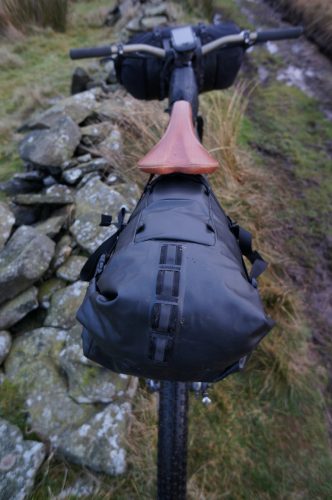
Used with the bracket, the seatpack is drama free. It doesn’t sit as close to the saddle as most seat packs I’ve used, but it’s very stable indeed, and feels pleasingly solid. The nose contains three removable inserts which add stiffness and shape. These are held in place with strips of velcro, which could snag your posh merino clothes, but they do add to the bombproof feel of the bag. There’s a strip of daisy chain loop along the top of the bag that could be used to secure extra cargo, or clip a rear light on, and it’s also a stealth reflective detail. There are some extra attachment points on the outside of the bags, including a bungee net on the bottom for a pair of flip flops. The latter is directly in the firing line of mud from the rear wheel, so I can’t imagine using it much in the UK, but it could be just the ticket for a jaunt across a desert.
Tough, But Weighty
I can’t help noticing that all of this kit is on the heavy side. The bar harness weighed 400g and even the smaller size seatpack tipped the scales at 587g, both a fair bit more than the claimed weights on Specialized’s website. At a time when smaller kit manufacturers are getting into ultralight gear made from Cuben and other exotic materials, Specialized have run the other way, and that’s no bad thing, it’s just something to be aware of when shopping around.
The seat pack and handlebar drybag are at the upper end of the size range, and it’s worth remembering that packs tend to stay much more secure when they’re full, instead of flobbling about half-empty. If you’re going light for a summer trip, the smaller seat pack and dry bag would make more sense. You’ll also need the small dry bag if you’re planning to squeeze it onto a set of drop bars.
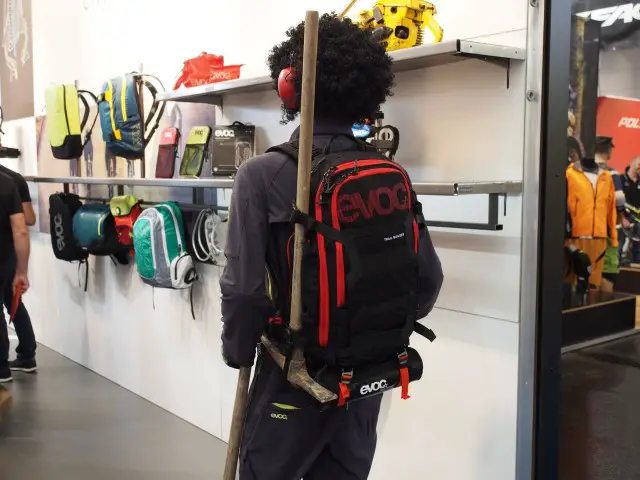
Fussy attachment points are a bit of a theme with the bags, with extra locking clips and rubbery straps making setup a chore even by bikepacking kit standards. The trade off is that everything does stay put when the faff is done. With one exception. The bar harness seems to be very sensitive to variations in handlebar profile, and as a result it was much more mobile than I’d like. After a couple of outings I actually got quite adept at pulling the bar bag up while riding along, like an ill fitting pair of trousers. Other testers have reported similar problems to varying degrees, with it working fine on one bike and not another. I eventually managed to cure my bar harness’s drooping problems, but it was quite a frustrating process.
Room For Improvement
If they work properly, the alu brackets give everything a solid feel, but I’d also like to see a bit of refinement for future editions. Lack of carbon compatibility is a bit of a downer in this day and age, standard M5 bolts on the handlebar clamps would be harder to round out and easier to replace, and a hinged seat clamp would also make installation of the seat pack easier. I’d also like to see an extra front bag added to the range at some point, for stuff that you need to get to on the move.
Apart from the slippage issue with handlebar harness, these bags aren’t bad at all, but they have a first generation product feel about them. The tough, punky aesthetics weren’t my cup of Bovril, but at least they’re trying to do something different. The seat pack and the top tube pack were the pick of the bunch for me, and both were things that I’d gladly dip into my own pocket for. Which brings us to the awkward question of value for money.
Overall
I wouldn’t place cost above everything else when buying a product of this type, as like a sleeping bag or tent, your initial outlay will open the door to tonnes of fabulous experiences, many of which will be cheap or free. But there’s no denying that the exchange rate has jacked the price of these up to the point where you could buy a lighter, more refined, UK-made product for the same or cheaper. There are undoubtedly a lot of little extra details on the bags, plus novel attachment systems, and it’s quite possible that these have bumped the final cost up, so you’ll have to decide whether you might need them or not.
The best thing about these bags is that you can just walk into your local Specialized dealer and pick up a set of these on impulse – which no doubt a few of you will do. And if that leads to more people discovering the simple, masochistic joy of bikepacking, that’s got to be a good thing.
The Handlebar Harness price was initially incorrectly listed as £35 on the Specialized website. This review has now been updated to reflect this pricing, and comments in the comments section below may reflect the previous price and wording.
Review Info
| Brand: | Specialized |
| Product: | Burra Burra bikepacking bags |
| From: | Specialized, www.specialized.com |
| Price: | Handlebar Harness £35, Drypack 23 £20, Top Tube Pack £35, Framepack 5 £80, Stabilizer Seatpack 20 £120, Stabilizer Seatpack 10 £110 |
| Tested: | by Antony for 2 months |
Comments (0)
Leave Reply
Post Comment
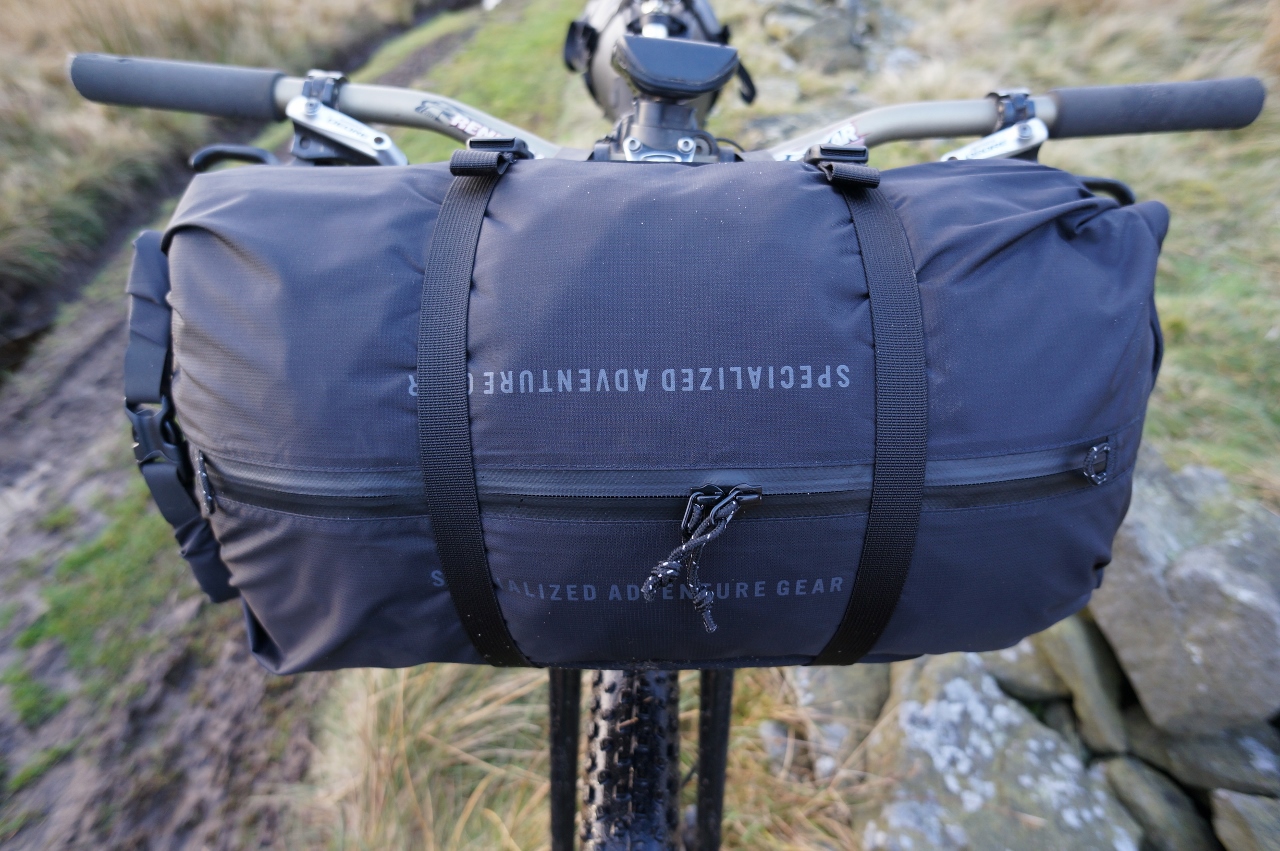
ll looks a bit “Not great really”.
As a couple of commenters have pointed out on Facebook, the price of the handlebar harness appears to have jumped up to £85 since this was written (It’s not just us – I’ve seen at least one other review which gave the lower price). So much for my remarks about it being good value. :-/
I treated myself to the Handlebar Stabilizer Harness and Drypack for a bit of bikepacking a couple of months ago. I didn’t want panniers for the reasons stated above (additional width, change of balance characteristics, appearance).
I agree with Antony – attaching the framepack to the handlebar was very fiddly and the instructions are next to useless.
I too found the rubber stabilizing staps hard to get through the ladderlock buckle. However once I had got them tight I tied them off by looping the excess rubber around itself. Once I did this the whole pack was solid and as a result the was very little movement of the luggage in the Drypack. Quite impressive given I had put it on my Specialized Diverge and was riding on rough roads over Exmoor. I reckon I had about 3kg of gear on the front.
While the initial setup was fiddly I expect future attachments to be easier and will be trying it on my XC bike soon.
I got the top tube pack too which is very useful and big enough for a few energy bars, phone, cards, keys etc.
Finally, I seem to have lucked out as I got the harness and pack at the old price. Still expensive, but overall good value I think.
Glad you’re getting on with it Daniel. Exmoor is a good test for any luggage carrying system!